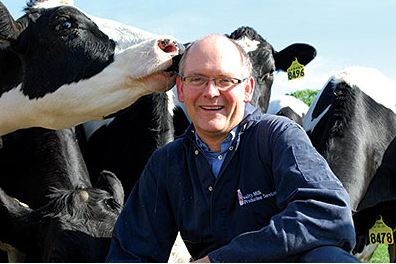



Editorial: Mastitis Challenges Examined at IMC
GLOBAL - World milk production faces huge changes if 2050 targets of 50 per cent output increases are to satisfy expanding populations.Herds will become larger and management will grow in complexity. More 24 hour milking on ‘super dairies’ will mean an increasingly less skilled parlour workforce is relied on to extract milk.
Consequently, udder health programmes and bacterial control will become more challenging on larger holdings.
This was the overriding theme for the International Mastitis Course held last week at Nottingham University, UK.
Attended by practicing vets, members of academia and representatives of animal health organisations, the IMC gave leading experts in cattle health a platform to present studies and ideas aimed at guiding the veterinary and farming professions in improving milk quality.
Key speaker at the course was Ynte Schukken, Professor and Director, Quality Milk Production Services, Cornell University, US.
Professor Schukken opened the conference with presentations on mastitis epidemiology and immunity.
He revealed that case studies have shown the importance of the correct sick bay utilisation in managing bacterial transmission through the herd.
Cornell University's Ynte Schukken spoke on mastitis epidemiology, immunology, diagnostics, SCC management and clinical mastitis data.
(Photo:Courtesy of Cornell University)
He added that persistently targeting specific bacteria is the key for successful treatment.
Professor Shukken also examined infection and inflammation patterns, stressing that all pathogens are persistent whilst having important pathological differences.
He then discussed the efficacy of the Startvac vaccination programme. Extensive field trials have shown that new infections can be reduced by 57 per cent with a cure rate increase of 73 per cent.
Startvac has also been shown to decrease of infection duration by one month.
Economic impacts of poor udder health were examined by Fran Welcome, Senior Extension Associate, also at the Quality Milk Production Service at Cornell.
Discarded milk counts for 66 per cent of mastitis losses. Mr Welcome referenced past research by Pamela Ruegg that showed the monetary losses experienced from high somatic cell counts are over twice that of medium counts.
Mr Welcome explored the risks of repeated cases and the costs associated with Streptococcus bacteria compared with Coliforms.
Studies conducted in the US found that first lactation animals were worst hit by S.aureus, E.Coli and Klebsiella spp pathogens whereas second lactation cows saw greater losses from Streptoccocus species, S.Aureus, E.Coli, Klebsiella spp and A pyogenes.
Also delivering papers at the IMC were the UK’s leading dairy health experts at Nottingham University.
Andrew Bradley, Clinical Reader in Dairy Production Medicine, delivered a talk on coliform mastitis in the context of case studies and Martin Green, Sub Dean of Research offered advice on farm level mastitis management and data analysis.
Michael Priestley
News Team - Editor
Mainly production and market stories on ruminants sector. Works closely with sustainability consultants at FAI Farms




